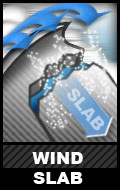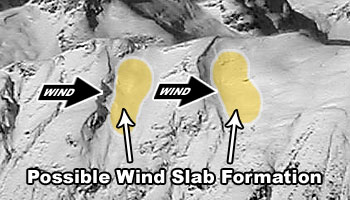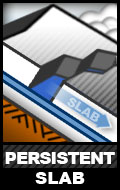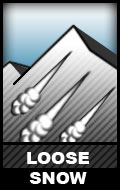Avalanche Danger Forecast
Issued Saturday, December 5, 2020 at 9pm for the greater Anchorage area Western Chugach Mountains (i.e. Chugach State Park):
We are transitioning from the clear, cold, and calm weather of the past few days into a more active pattern characterized by increasing temperatures, winds, and the likelihood of precipitation. With this change comes increasing avalanche danger, which will be more pronounced in southern and eastern areas of the park closer to Turnagain Arm and Girdwood. In these southern and eastern areas, winds will be stronger and the likelihood and amount of precipitation higher.
While the avalanche danger trend will be increasing this forecast period, the danger is expected to remain within the moderate rating. That said, don’t underestimate moderate avalanche danger (especially during the early season). Dangerous human triggered avalanches remain possible in some areas.
Avalanche Problems:
As winds increase across Chugach State Park the next few days, there are a few to several inches of loose snow available for transport into fresh wind slabs. Any new snow will further increase the amount of snow available for wind loading. Potentially dangerous wind slabs are most likely to develop on the leeward sides of ridges and cross-loaded features like gullies (see graphics above).
Wind slabs up to D2 in size are possible on leeward aspects above 2500′ where the terrain is steeper than 35º. Wind slab danger is expected to increase Sunday and remain steady through the forecast period. Expect the danger to be higher in the southern and eastern areas of the park closer to Turnagain Arm and Girdwood due to stronger winds and more snow in these areas.
Recent avalanches, shooting cracks, hollow and/or punchy feeling snow, and pockets of deeper snow are all indicators of wind slab development. Also, expect wind slabs below and along corniced areas. Pole probing and hand pits are a quick and effective means of assessing this problem as you travel. Digging a snowpit and conducting a compression test and/or extended column test will give you an even better assessment before you commit to terrain of consequence.
Persistent slab danger will be increasing this forecast period, as multiple and varied persistent weak layers in the snowpack are stressed from wind loading, precipitation, and increasing temperatures.
Persistent slabs up to D2.5 in size are possible on all aspects (but especially northerly aspects with weaker snow) above 2500′ where the terrain is steeper than 35º.
Persistent slabs are a lower probability but higher consequence avalanche problem. They are much less likely to be triggered than wind slabs but will be much larger and more difficult to escape due to their hard slab characteristics.
Wind loading and any new snow will stress existing persistent weak layers, which are diverse and widespread. Faceted snow exists above and below a melt-freeze crust in some areas, sandwiched between wind packed layers in many areas, and a basal weak layer of advanced facets and depth hoar is widespread.
In addition to red flags of persistent slab danger like recent avalanches, shooting cracks, and collapsing (aka “whumphing“); digging a snowpit and conducting an extended column test will give you a better idea of how this problem is manifesting where you intend to recreate.
Be especially wary of areas with more snow that may harbor larger slabs and produce larger and more dangerous avalanches.
Dry, loose snow avalanches (aka “sluffs) are possible on wind-sheltered terrain above 3000′ where the terrain is steeper than 38º.
While these avalanches will be relatively small (D1), they do have the potential to cause a fall or loss of control and build up mass that “steps down” and triggers a larger slab avalanche.
Don’t let a small sluff catch you off guard, especially if you’re on exposed terrain.
Before traveling on, through, or under terrain that has the potential to avalanche; think about the consequences and have a plan (to escape the avalanche, for re-grouping, and rescue).
Avoid terrains traps!
Click the hyperlinks and icons to learn more.






